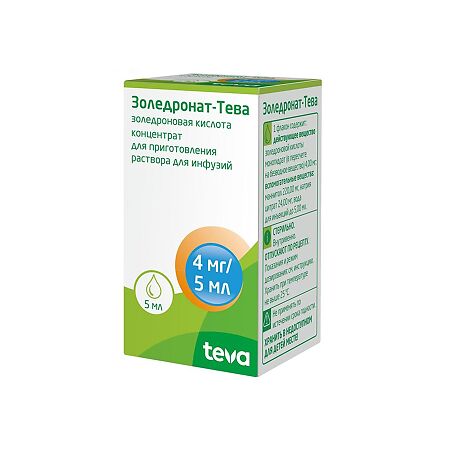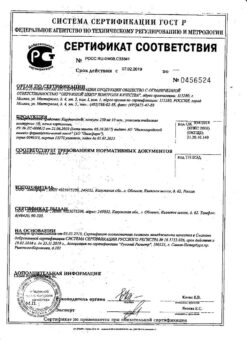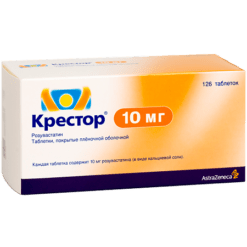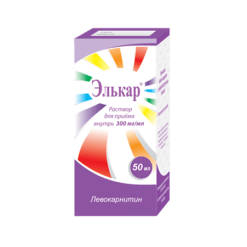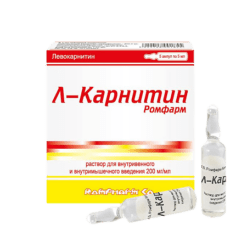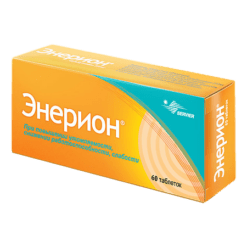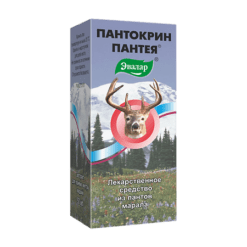No products in the cart.
Zoledronate-Teva, 4 mg 5 ml
€88.36 €76.58
Description Bone resorption inhibitor – bisphosphonate Pharmacodynamics: Pharmacokinetics:
ATX: M.05.B.A.08 Zoledronic acid
Zoledronic acid refers to highly effective bisphosphonates that act selectively on bone tissue by inhibiting bone resorption by acting on osteoclasts.
The selective action of bisphosphonates on bone tissue is based on their high affinity for mineralized bone tissue. The exact molecular mechanism providing inhibition of osteoclast activity is still unclear.
Zoledronic acid has no undesirable effects on bone formation, mineralization and mechanical properties.
In addition to its inhibitory effect on bone resorption, zoledronic acid has antitumor properties that make the drug effective against bone metastases. In vitro: inhibits proliferation of osteoblasts, shows direct cytostatic and proapoptotic activity, synergistic cytostatic effect with antitumor drugs, anti-adhesive and anti-invasive activity. Zoledronic acid, by inhibiting proliferation and inducing apoptosis, has a direct antitumor effect against human myeloma cells and breast cancer cells, and also reduces penetration of human breast cancer cells through the extracellular matrix, indicating that it has antimetastatic properties. In addition, zoledronic acid inhibits proliferation of human and animal endothelial cells and has anti-angiogenic effect. In patients with breast cancer, prostate cancer and other solid tumors with metastatic involvement of bone tissue zoledronic acid prevents the development of pathological fractures, spinal cord compression, reduces the need for radiation therapy and surgery, reduces tumor hypercalcemia. The drug is able to inhibit the progression of pain syndrome. The therapeutic effect is less pronounced in patients with osteoblastic foci than in osteolytic ones. In patients with multiple myeloma and breast cancer with at least one bone foci the efficacy of zoledronic acid in a dose of 4 mg is comparable to pamidronic acid in a dose of 90 mg. In patients with tumor hypercalcemia, the action of the drug is characterized by a decrease in serum calcium and renal calcium excretion. The average time to normalization of calcium is about 4 days. By day 10, calcium levels normalize in 87-88% of patients. The average time to relapse (albumin-corrected serum calcium content of at least 2.9 mmol/L) is 30-40 days. There is no significant difference between the effectiveness of zoledronic acid at doses of 4 and 8 mg in the treatment of hypercalcemia. The studies show no significant differences in the frequency and severity of adverse events observed in patients treated with zoledronic acid at doses of 4 mg and 8 mg, pamidronic acid at a dose of 90 mg, or placebo in both the treatment of bone metastases and hypercalcemia.
Pharmacokinetic data for bone metastases were obtained after single and repeated 5- and 15-minute infusions of 2, 4, 8, and 16 mg of zoledronic acid in 64 patients. Pharmacokinetic parameters were independent of the drug dose.
After infusion initiation, serum zoledronic acid concentrations increase rapidly, peaking at the end of the infusion, followed by a rapid 10% decrease in concentration after 4 hours and a less than 1% peak after 24 hours with a consistently prolonged period of low concentrations not exceeding 0.1% of maximum until repeat infusion at day 28.
Distribution
The low affinity of zoledronic acid for blood cellular components has been shown, with a mean whole blood to plasma concentration ratio of 0.59 over a concentration range of 30 ng/mL to 5000 ng/mL. Binding to plasma proteins is low, the fraction of unbound fraction is 60-77% and depends slightly on the drug concentration (from 2 to 2000 ng/ml).
Biotransformation/metabolism
Zoledronic acid is not metabolized and is excreted unchanged by the kidneys. According to the data obtained in vitro, zoledronic acid does not inhibit human cytochrome P450 isoenzymes and undergoes no biotransformation, which suggests that the state of liver function does not affect zoledronic acid pharmacokinetics in any significant way.
Elimation
The zoledronic acid administered intravenously is excreted by the kidneys in three phases: a rapid biphasic elimination of the drug from the systemic circulation with half-lives of 0.24 h and 1.87 h and a prolonged phase with a final half-life of 146 h.
No cumulation of the drug was observed with repeated administrations every 28 days. During the first 24 h, 39±16% of the administered dose is detected in the urine. The remaining amount is mainly bound to the bone tissue. Then there is a slow reverse release of zoledronic acid from the bone tissue into the systemic bloodstream and its excretion by the kidneys.
The total plasma clearance of the drug is 5.04±2.5 L/h and is independent of the drug dose, sex, age, race and body weight of the patient. Increasing the infusion time from 5 to 15 minutes leads to a 30% decrease in zoledronic acid concentration at the end of infusion, but does not affect the area under the concentration-time curve (AUC).
Pharmacokinetic studies have not been performed in patients with hypercalcemia or impaired liver function. Less than 3% of the drug dose is excreted through the intestine.
Pharmacokinetics in special cases
There are no data describing the pharmacokinetics of zoledronic acid in patients with hepatic impairment. According to in vitro data, zoledronic acid does not inhibit human cytochrome P450 isoenzymes and is not biotransformed. In animal studies, less than 3% of the administered dose was detected in the feces. The above suggests that the state of liver function has no significant effect on the pharmacokinetics of zoledronic acid.
Renal dysfunction
Renal clearance of zoledronic acid correlated with creatine clearance (CK) and was 75±33% of CK, a mean of 84±29 ml/min (range 22-143 ml/min) in 64 patients included in the study. A population analysis showed that in patients with moderate renal impairment (CK of 50 mL/min), the calculated zoledronic acid clearance was 72% of the zoledronic acid clearance value in patients with creatinine clearance ≥84 mL/min.
There are limited data on the pharmacokinetics of the drug in patients with severe renal dysfunction (CK less than 30 ml/min).
Gender, age, and race
The data from three pharmacokinetic studies in patients with cancer with bone metastases showed no effect of body weight, age (38 to 84 years), gender, and race on zoledronic acid clearance.
.
Indications
Indications
– Bone metastases from malignant solid tumors (prostate cancer, breast cancer and others) and multiple myeloma, including to reduce the risk of pathological fractures, spinal cord compression, tumor-related hypercalcemia, and reduce the need for radiation therapy or bone surgery.
– Hypercalcemia due to malignant tumors (albumin-corrected serum calcium > 12.0 mg/dL [3.0 mmol/L]).
Pharmacological effect
Pharmacological effect
Bone resorption inhibitor – bisphosphonate
ATC: M.05.B.A.08 Zoledronic acid
Pharmacodynamics:
Zoledronic acid is a highly effective bisphosphonate that selectively acts on bone tissue, inhibiting bone resorption and affecting osteoclasts.
The selective effect of bisphosphonates on bone tissue is based on their high affinity for mineralized bone tissue. The exact molecular mechanism responsible for the inhibition of osteoclast activity still remains unclear.
Zoledronic acid does not have undesirable effects on bone formation, mineralization, or mechanical properties.
In addition to its inhibitory effect on bone resorption, zoledronic acid has antitumor properties that ensure the effectiveness of the drug against bone metastases.
In vivo: inhibits bone resorption by osteoclasts, changes the microenvironment of the bone marrow, leads to a decrease in the growth of tumor cells; exhibits antiangiogenic activity. Suppression of bone resorption is clinically accompanied, among other things, by a pronounced decrease in pain.
In vitro: inhibits the proliferation of osteoblasts, exhibits direct cytostatic and proapoptotic activity, a synergistic cytostatic effect with antitumor drugs, anti-adhesive and anti-invasive activity.
Zoledronic acid, by inhibiting proliferation and inducing apoptosis, has a direct antitumor effect against human myeloma cells and breast cancer, and also reduces the penetration of human breast cancer cells through the extracellular matrix, which indicates the presence of antimetastatic properties. In addition, zoledronic acid inhibits the proliferation of human and animal endothelial cells and has an antiangiogenic effect.
In patients with breast cancer, prostate cancer and other solid tumors with metastatic bone tissue, zoledronic acid prevents the development of pathological fractures, spinal cord compression, reduces the need for radiation therapy and surgical interventions, and reduces tumor hypercalcemia. The drug is able to inhibit the progression of pain. The therapeutic effect is less pronounced in patients with osteoblastic lesions than in patients with osteolytic lesions.
In patients with multiple myeloma and breast cancer with at least one bone lesion, the effectiveness of zoledronic acid at a dose of 4 mg is comparable to pamidronic acid at a dose of 90 mg.
In patients with tumor hypercalcemia, the effect of the drug is characterized by a decrease in calcium levels in the blood serum and calcium excretion by the kidneys.
The average time until calcium levels normalize is about 4 days. By day 10, calcium levels are normalized in 87-88% of patients. The average time to relapse (albumin-corrected serum calcium level of at least 2.9 mmol/l) is 30-40 days. There are no significant differences between the effectiveness of zoledronic acid at doses of 4 and 8 mg in the treatment of hypercalcemia.
The studies did not reveal significant differences in the incidence or severity of adverse events observed in patients receiving zoledronic acid 4 mg and 8 mg, pamidronic acid 90 mg, or placebo for the treatment of either bone metastases or hypercalcemia.
Pharmacokinetics:
Pharmacokinetic data for bone metastases were obtained after single and repeated 5- and 15-minute infusions of 2, 4, 8 and 16 mg of zoledronic acid in 64 patients. Pharmacokinetic parameters do not depend on the dose of the drug.
Once the infusion is started, serum zoledronic acid concentrations increase rapidly, reaching a peak at the end of the infusion, followed by a rapid decrease in concentrations of 10% after 4 hours and less than 1% of the peak after 24 hours, with a successively prolonged period of low concentrations not exceeding 0.1% of the maximum until re-infusion on day 28.
Distribution
Zoledronic acid has been shown to have a low affinity for cellular components of the blood; the average ratio of concentration in whole blood to plasma concentration is 0.59 in the concentration range from 30 ng/ml to 5000 ng/ml. Binding to blood plasma proteins is low, the proportion of the unbound fraction is 60-77% and slightly depends on the concentration of the drug (from 2 to 2000 ng/ml).
Biotransformation/metabolism
Zoledronic acid is not metabolized and is excreted unchanged by the kidneys. Based on in vitro data, zoledronic acid does not inhibit human cytochrome P450 isoenzymes and does not undergo biotransformation, suggesting that the state of liver function does not significantly affect the pharmacokinetics of zoledronic acid.
Removal
Zoledronic acid administered intravenously is excreted by the kidneys in three stages: a rapid biphasic elimination of the drug from the systemic circulation with half-lives of 0.24 hours and 1.87 hours and a long phase with a terminal half-life of 146 hours.
No accumulation of the drug was observed with repeated administrations every 28 days. During the first 24 hours, 39±16% of the administered dose is found in the urine. The remaining amount is mainly associated with bone tissue. Zoledronic acid is then slowly released back from bone tissue into the systemic circulation and excreted by the kidneys.
The total plasma clearance of the drug is 5.04 ± 2.5 l/h and does not depend on the dose of the drug, gender, age, race and body weight of the patient. Increasing the infusion time from 5 to 15 minutes resulted in a 30% decrease in zoledronic acid concentration at the end of the infusion but did not affect the area under the concentration-time curve (AUC).
Pharmacokinetic studies have not been conducted in patients with hypercalcemia or liver dysfunction. Less than 3% of the drug dose is excreted through the intestines.
Pharmacokinetics in special cases
Liver dysfunction
There are no data describing the pharmacokinetics of zoledronic acid in patients with impaired liver function. According to data obtained in vitro, zoledronic acid does not inhibit isoenzymes of the human cytochrome P450 system and does not undergo biotransformation. In animal studies, less than 3% of the administered dose was found in feces. The above suggests that the state of liver function does not significantly affect the pharmacokinetics of zoledronic acid.
Renal dysfunction
Renal clearance of zoledronic acid correlates with creatine clearance (CR) and amounts to 75±33% of CL, with an average of 84±29 ml/min (range 22-143 ml/min) in 64 patients included in the study. A population analysis showed that in patients with moderate renal impairment (creatinine clearance 50 ml/min), the calculated clearance of zoledronic acid was 72% of the clearance of zoledronic acid in patients with creatinine clearance ≥84 ml/min.
Data on the pharmacokinetics of the drug in patients with severe renal impairment (creatinine clearance less than 30 ml/min) are limited.
Gender, age and race
According to three pharmacokinetic studies in patients with cancer with bone metastases, there was no effect of body weight, age (from 38 to 84 years), gender and race on the clearance of zoledronic acid.
Special instructions
Special instructions
Before infusion, ensure that the patient is adequately hydrated. If necessary, it is recommended to administer a 0.9% sodium chloride solution before, in parallel or after the infusion of Zoledronate-Teva. Overhydration should be avoided due to the risk of cardiovascular complications.
After administration of the drug Zoledronate-Teva, constant monitoring of calcium (adjusted for albumin), phosphorus, magnesium and creatinine concentrations in the blood serum is necessary.
If hypocalcemia, hypophosphatemia or hypomagnesemia develops, short-term additional administration of the corresponding substances may be necessary. Patients with untreated hypercalcemia usually have impaired renal function, so careful monitoring of renal function in patients in this category is necessary.
When deciding on treatment with Zoledronate-Teva in patients with bone metastases in order to reduce the risk of pathological fractures, spinal cord compression, tumor-related hypercalcemia, and reduce the need for radiation therapy or bone surgery, it should be taken into account that the therapeutic effect occurs 2-3 months after the start of treatment with the drug.
Renal dysfunction
There are isolated reports of renal dysfunction associated with the use of bisphosphonates. Risk factors for such complications include dehydration, pre-existing renal impairment, repeated administration of Zoledronate-Teva or other bisphosphonates, as well as the use of nephrotoxic drugs, and too rapid administration of the drug. Although the risk of the complications described above is reduced when the drug is administered at a dose of 4 mg for at least 15 minutes, the possibility of impaired renal function remains.
There have been cases of deterioration in renal function, progression of renal dysfunction up to the occurrence of renal failure and the need for hemodialysis with the first or single use of zoledronic acid.
Increases in serum creatinine concentrations are also observed in some patients with long-term use of the drug at recommended doses, although with less frequency.
The serum creatinine concentration should be determined before each administration of the drug. In patients with mild to moderate renal impairment with bone metastases from solid malignant tumors and multiple myeloma, a lower starting dose of the drug is recommended (see section “Dosage and Administration”). If signs of renal dysfunction are detected during drug therapy, treatment should be resumed only after the creatinine concentration reaches values within ±10% of the initial value (see section “Method of administration and dosage”). The use of the drug in patients with severe renal impairment is contraindicated (see section “Contraindications”).
Osteonecrosis
Cases of osteonecrosis of the jaw have been described, mainly in patients with cancer during treatment with bisphosphonates, including zoledronic acid. Many of these patients received concurrent corticosteroid therapy or chemotherapy. Many patients had signs of a local infectious inflammatory process, including osteomyelitis.
In clinical practice, the development of osteonecrosis of the jaw was most often observed in patients with advanced breast cancer and multiple myeloma, as well as in the presence of dental diseases (after tooth extraction, periodontal diseases, unsatisfactory fixation of dentures).
Known risk factors for osteonecrosis of the jaw are cancer, concurrent therapy (chemotherapy, radiation therapy, antiangiogenic drugs, glucocorticosteroids), concomitant conditions (anemia, coagulopathies, infection, pre-existing oral disease).
Before using bisphosphonates in patients with cancer, a dental examination and necessary preventive procedures should be performed, and strict oral hygiene should be recommended.
During treatment with bisphosphonates, invasive dental procedures should be avoided if possible. In patients with osteonecrosis of the jaw secondary to bisphosphonate therapy, invasive dental intervention may worsen the condition. There is no evidence that interrupting bisphosphonate treatment before dental surgery reduces the risk of osteonecrosis of the jaw. The treatment plan for a particular patient should be based on an individual assessment of the risk/benefit ratio.
Cases of osteonecrosis of other localizations have been described, including the pelvic bone, femur, external auditory canal, mainly in adult patients with cancer receiving bisphosphonate therapy, incl. zoledronic acid.
Atypical femur fractures
Cases of atypical subtrochanteric and diaphyseal fractures of the femur have been described in patients receiving long-term treatment with bisphosphonates for osteoporosis. Transverse or short oblique fractures can be located anywhere along the femur from the lesser trochanter to the supracondylar fossa.
The described fractures occur after minimal trauma or spontaneously. Some patients experience pain in the hip or groin, often accompanied by signs of stress fractures on diagnostic imaging studies, which occur weeks and months before the development of a complete femur fracture. Fractures often occur on both sides, so if a femoral fracture occurs in a patient receiving bisphosphonate therapy, the contralateral femur should be evaluated. Slow healing (healing) of these fractures has also been reported.
There have been reports of atypical femoral fractures in patients treated with zoledronic acid, but the causal relationship of these fractures to zoledronic acid therapy has not been established. The decision to discontinue therapy with Zoledronate-Teva in patients with suspected atypical femoral fractures before evaluation should be based on an individual assessment of the ratio of expected benefits to possible risks.
Patients receiving therapy with Zoledronate-Teva should be warned to report any pain in the hip or groin area to medical personnel; Each patient complaining of such symptoms should be examined to identify a possible incomplete (incomplete) fracture of the femur.
Muscle pain
In clinical practice, infrequent cases of severe and in some cases life-limiting pain in bones, joints and muscles have been reported during treatment with bisphosphonates, which include zoledronic acid. These symptoms developed over a period of one day to several months after the start of treatment. After cessation of treatment, most patients experienced resolution of symptoms. In several patients, symptoms recurred when therapy was restarted or another bisphosphonate was used.
Hypocalcemia
In clinical practice, the development of hypocalcemia has been reported in patients receiving treatment with zoledronic acid. In the case of severe hypocalcemia, the development of adverse events from the nervous system (convulsions, tetany and numbness), and cardiac arrhythmia was noted. In some cases, hypocalcemia can be life-threatening.
Caution should be exercised when using Zoledronate-Teva concomitantly with other drugs that can cause hypocalcemia, as this may lead to a synergistic interaction and the development of severe hypocalcemia. Before starting therapy with Zoledronate-Teva, serum calcium levels should be determined and hypocalcemia corrected. Patients should receive adequate calcium and vitamin D supplementation.
Patients receiving therapy with Zoledronate-Teva should not receive other bisphosphonates concomitantly.
The effectiveness and safety of the use of Zoledronate-Teva in pediatric practice has not yet been established.
Impact on the ability to drive vehicles. Wed and fur.:
The effect of Zoledronate-Teva on the ability to drive vehicles and machines has not been studied. In the event of adverse reactions from the nervous system, patients are advised to refrain from driving vehicles and operating machinery, as well as engaging in activities that require concentration and strain on psychomotor functions.
Active ingredient
Active ingredient
Zoledronic acid
Composition
Composition
1 bottle contains:
active ingredient:
zoledronic acid monohydrate (calculated as anhydrous substance) 4.00 mg;
excipients:
mannitol 220.00 mg,
sodium citrate 24.00 mg,
water for injections up to 5.00 ml.
Pregnancy
Pregnancy
The use of Zoledronate-Teva during pregnancy is contraindicated.
Zoledronate-Teva may have adverse effects on the fetus. Animal studies have demonstrated reproductive toxicity. There is no data on the use of the drug during pregnancy in humans.
If pregnancy occurs during bisphosphonate therapy, there may be a risk of intrauterine malformations of the fetus (for example, skeletal abnormalities and other anomalies). The dependence of the risk on the time interval between stopping bisphosphonate therapy and the moment of conception, the route of administration and the characteristics of a particular drug is unknown.
Women of reproductive age should be warned about the need to use reliable methods of contraception during treatment with Zoledronate-Teva.
It is not known whether zoledronic acid passes into breast milk. The use of Zoledronate-Teva during breastfeeding is contraindicated.
In animal studies, zoledronic acid suppressed fertility at a dose of 0.1 mg/kg/day. There are no data on the effects of zoledronic acid on fertility in humans.
Contraindications
Contraindications
– Hypersensitivity to zoledronic acid, other bisphosphonates or any other components included in the drug.
– Severe renal dysfunction (creatinine clearance less than 30 ml/min).
– Pregnancy and lactation period.
– Children and adolescents (efficacy and safety have not been established).
With caution:
If you have one of the listed diseases, be sure to consult your doctor before taking the drug.
Use the drug with caution in patients with mild to moderate renal impairment (creatinine clearance > 30 ml/min).
Caution should be exercised when used concomitantly with other drugs that can cause hypocalcemia (for example, aminoglycosides, calcitonin, loop diuretics) due to the risk of developing a synergistic effect leading to severe hypocalcemia.
Caution should be used concomitantly with other drugs with nephrotoxic potential.
Caution should be used simultaneously with antiangiogenic drugs due to an increased risk of developing osteonecrosis of the jaw.
Use caution when used in patients with severe liver dysfunction due to limited data on the use of the drug in patients in this category.
Side Effects
Side Effects
The most serious adverse reactions (APs) in patients receiving zoledronic acid for registered indications were: anaphylactic reaction, ocular adverse events, osteonecrosis of the jaw, atypical femoral fracture, atrial fibrillation, renal dysfunction, acute phase reaction, and hypocalcemia.
Information on the incidence of HP with zoledronic acid 4 mg is based primarily on data obtained during long-term therapy. HP associated with zoledronic acid use is usually mild and transient, similar to those reported with other bisphosphonates. These HP may occur in approximately one third of patients treated with zoledronic acid.
Symptoms of the acute phase reaction typically developed 3 days after use of zoledronic acid: general malaise, bone pain, fever, chills, flu-like syndrome, and arthritis followed by joint swelling; Symptoms usually resolved within a few days. HPs such as arthralgia and myalgia were also frequently reported.
Very often, a decrease in renal calcium excretion was accompanied by a sharp decrease in phosphorus levels, which was asymptomatic and did not require treatment. Often, a decrease in calcium levels in the blood serum up to the development of hypocalcemia may be accompanied by the absence of clinical manifestations.
There have been reports of frequent gastrointestinal reactions, such as nausea and vomiting, following intravenous infusion of zoledronic acid.
Local reactions at the infusion site, such as redness or swelling and/or pain, were observed infrequently.
Anorexia has been frequently observed in patients receiving zoledronic acid 4 mg.
Cases of rash or itching were reported infrequently. As with other bisphosphonates, frequent cases of conjunctivitis have been reported.
Based on a pooled analysis of controlled studies, severe anemia (hemoglobin concentration <8.0 g/dL) was reported to occur frequently in patients receiving zoledronic acid 4 mg.
HP are grouped in accordance with the MedDRA classification of organs and organ systems, within each group they are listed in order of decreasing frequency of occurrence, within each subgroup – in decreasing order of importance.
Criteria for assessing the frequency of occurrence: very common (≥ 1/10), common (≥ 1/100, < 1/10), uncommon (≥ 1/1000, < 1/100), rare (≥ 1/10000, < 1/1000), very rare (< 1/10000), including individual reports.
Disorders of the blood and lymphatic system: often – anemia; uncommon – thrombocytopenia, leukopenia; rarely – pancytopenia.
Mental disorders: often – sleep disturbance; infrequently – feeling of anxiety; rarely – confusion.
Nervous system disorders: often – headache, paresthesia; infrequently – dizziness, dysgeusia, hypoesthesia, hyperesthesia, tremor; very rarely – convulsions, hypoesthesia and tetany (developing as a result of hypocalcemia).
Violations of the organ of vision: often – conjunctivitis; infrequently – “blurred” vision; rarely – uveitis.
Digestive system disorders: often – nausea, vomiting, loss of appetite, constipation; uncommon – diarrhea, abdominal pain, dyspepsia, stomatitis, dry mouth.
Disorders of the respiratory system, thoracic and mediastinal organs: infrequently – shortness of breath, cough; rarely – interstitial lung disease.
Disorders of the skin and subcutaneous tissues: often – increased sweating; uncommon – itching, rash (including erythematous and macular).
Disorders of the musculoskeletal system and connective tissue: often – bone pain, myalgia, arthralgia, generalized pain, joint stiffness; infrequently – necrosis of the jaw, muscle cramps.
Cardiac disorders: rarely – bradycardia, arrhythmia (developing as a result of hypocalcemia).
Vascular disorders: often – increased blood pressure; infrequently – decreased blood pressure.
Renal and urinary tract disorders: often – renal dysfunction; uncommon – acute renal failure, hematuria, proteinuria.
Immune system disorders: uncommon – hypersensitivity reactions; rarely – angioedema.
Laboratory and instrumental data: very often – hypophosphatemia; often – increased concentrations of creatinine and urea in the blood serum, hypocalcemia; uncommon – hypomagnesemia, hypokalemia; rarely – hyperkalemia, hypernatremia.
General disorders and disorders at the injection site: often – acute phase reaction, increased body temperature, flu-like syndrome (including general malaise, chills, feeling of malaise, “hot flashes”), peripheral edema, asthenia; uncommon – reaction at the injection site (pain, irritation, swelling, induration, redness), chest pain, weight gain; rarely – arthritis and swelling of the joints as a symptom of an acute phase reaction.
It should be borne in mind that when using other bisphosphonates in patients with bronchial asthma who are sensitive to acetylsalicylic acid, cases of bronchospasm were observed, but this phenomenon was not observed when using zoledronic acid.
Adverse reactions based on spontaneous reports and literature reports (frequency unknown)
Immune system disorders: anaphylactic reaction/shock.
Nervous system disorders: drowsiness.
Visual disorders: episcleritis, scleritis and inflammatory diseases of the orbit.
Cardiac disorders: atrial fibrillation.
Vascular disorders: decreased blood pressure leading to syncope or circulatory collapse, mainly in patients with risk factors.
Disorders of the respiratory system, chest and mediastinal organs: bronchospasm.
Skin and subcutaneous tissue disorders: urticaria.
Musculoskeletal and connective tissue disorders: sudden severe limitation of joint mobility and/or severe and in some cases life-limiting bone, joint and/or muscle pain, atypical subtrochanteric and diaphyseal fractures of the femur.
Description of selected adverse reactions
Renal dysfunction
The use of zoledronic acid has been associated with the development of renal dysfunction. When used in clinical trials to prevent skeletal complications in patients with advanced bone malignancies, the incidence of drug-related renal dysfunction was as follows: multiple myeloma (3.2%), prostate cancer (3.1%), breast cancer (4.3%), lung cancer and other solid tumors (3.2%).
Factors that may increase the risk of deterioration of renal function include: dehydration, pre-existing renal impairment, multiple courses of treatment with zoledronic acid or other bisphosphonates, concomitant use of nephrotoxic drugs, or administration of the drug for less than the recommended period of time.
There was a deterioration in renal function, progression of renal dysfunction up to renal failure and the need for hemodialysis after administration of a starting or single dose of zoledronic acid.
Osteonecrosis of the jaw
When treated with bisphosphonates, including zoledronic acid, cases of osteonecrosis (mainly of the jaw, but also in other locations, including the pelvic bone, femur and external auditory canal) were observed, mainly in patients with cancer.
Many patients showed signs of a local infectious process, incl. osteomyelitis; Most of these cases were observed in patients with cancer after tooth extraction or after dental surgery.
There are widely recognized multiple risk factors that predispose to the development of osteonecrosis of the jaw, such as malignancies, concurrent therapies (eg, chemotherapy, antiangiogenic agents, radiation therapy, glucocorticosteroids), and concomitant conditions (eg, anemia, coagulopathies, infections, preexisting oral disease). Although a cause-and-effect relationship has not been established, it is advisable to avoid dental surgery due to the possibility of delayed recovery. Based on the available data, the incidence of osteonecrosis of the jaw is associated with the nature of the tumor (advanced breast cancer, multiple myeloma).
Acute phase reaction
This adverse reaction is a complex of symptoms: fever, general weakness, bone pain, chills, flu-like syndrome. Typically begins ≤ 3 days after zoledronic acid infusions. The reaction is also referred to using the terms “flu-like” or “post-dose” symptoms. Symptoms usually resolve within a few days.
Atrial fibrillation
In one clinical study, using zoledronic acid for 3 years in patients with postmenopausal osteoporosis (at a dose of 5 mg once a year), the overall incidence of atrial fibrillation was 2.5% (96 of 3862 people) compared with 1.9% (75 of 3852) in the placebo group. The incidence of atrial fibrillation associated with severe hemodynamic compromise was 1.3% (51 of 3862) and 0.6% (22 of 3852) for zoledronic acid and placebo, respectively.
A similar imbalance was not observed in other clinical studies of zoledronic acid, including the use of zoledronic acid 4 mg once every 3-4 weeks in patients with cancer.
The reason for the increased incidence of atrial fibrillation during therapy with zoledronic acid in patients with postmenopausal osteoporosis was not established in this study.
If any of the side effects indicated in the instructions get worse, or you notice any other side effects not listed in the instructions, tell your doctor. In case of acute overdose of the drug (limited data), renal dysfunction has been observed, including renal failure, changes in electrolyte composition, including a decrease in the concentration of calcium, phosphate and magnesium in the blood plasma. A patient who has received a dose of the drug exceeding the recommended one should be under constant supervision.
In case of hypocalcemia accompanied by clinical manifestations, an infusion of calcium gluconate is indicated.
Interaction
Interaction
It is recommended to be careful when using bisphosphonates concomitantly with aminoglycosides, calcitonin, and loop diuretics, since the simultaneous effect of these drugs is manifested by an increase in the duration of the decrease in calcium levels in the blood plasma.
Caution is necessary when using zoledronic acid concomitantly with drugs that have a potential nephrotoxic effect.
Caution must be exercised when used concomitantly with angiogenesis inhibitors due to an increased incidence of necrosis of the jaw.
When simultaneous use with zoledronic acid of other commonly used drugs (antitumor agents, diuretics [except for loop ones], antibiotics, analgesics), no clinically significant interactions were observed.
When using the drug Zoledronate-Teva in combination with thalidomide, no dose adjustment of zoledronic acid is required, with the exception of use in patients with mild to moderate renal impairment.
The combined use of thalidomide (100 mg or 200 mg once daily) and Zoledronate-Teva (4 mg) in patients with multiple myeloma does not significantly affect the pharmacokinetics of zoledronic acid and CC.
Pharmaceutical interactions and compatibility issues
A diluted solution of zoledronic acid should not be mixed with infusion solutions containing calcium ions, such as Ringer’s solution.
When using glass vials, infusion systems and bags of various types made of polyvinyl chloride, polyethylene and polypropylene (pre-filled with 0.9% sodium chloride solution or 5% dextrose solution) for the administration of zoledronic acid, no signs of incompatibility with the drug were found.
Overdose
Overdose
In case of acute overdose of the drug (limited data), renal dysfunction was observed, including renal failure, changes in electrolyte composition, including a decrease in the concentration of calcium, phosphate and magnesium in the blood plasma. A patient who has received a dose of the drug exceeding the recommended one should be under constant supervision.
In case of hypocalcemia accompanied by clinical manifestations, an infusion of calcium gluconate is indicated.
Storage conditions
Storage conditions
Store at a temperature not exceeding 25 °C.
Keep out of the reach of children.
Shelf life
Shelf life
2 years.
Do not use after the expiration date stated on the package.
Manufacturer
Manufacturer
Pliva Hrvatska d.o.o., Croatia
Additional information
| Shelf life | 2 years. Do not use after the expiration date printed on the package. |
|---|---|
| Conditions of storage | Store at a temperature not exceeding 25 ° C. Store out of the reach of children. |
| Manufacturer | Pliva Hrvatska d.o.o., Croatia |
| Medication form | concentrate for preparation of infusion solution |
| Brand | Pliva Hrvatska d.o.o. |
Related products
Buy Zoledronate-Teva, 4 mg 5 ml with delivery to USA, UK, Europe and over 120 other countries.

